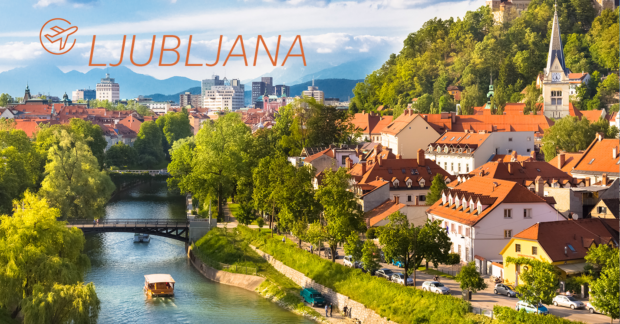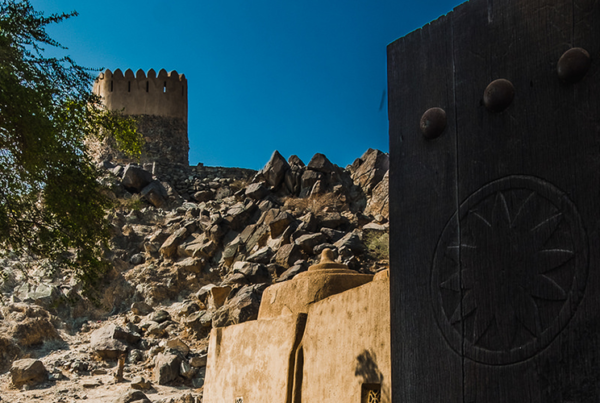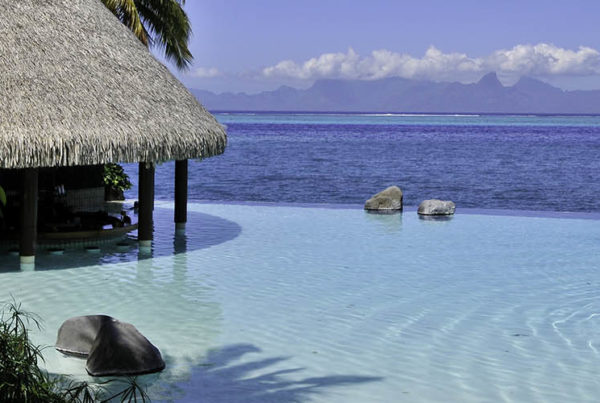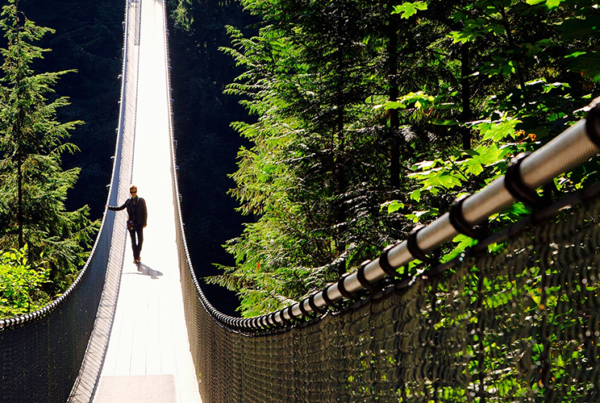The Slovenian capital Ljubljana is justifiably famous for its stunning buildings. Its most famous architect, Jože Plečnik, a classicist, tried to model the city on ancient Athens. His collected works are considered to be important pieces of art and are together known as ‘Plečnik’s Ljubljana’. We choose eight of his best buildings which you can discover on your own or by joining a walking or bicycle tour.
The National and University Library
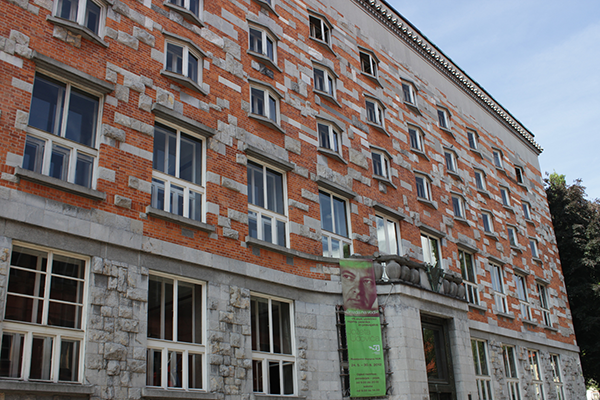
Source: Flickr
Described as ‘an exquisite cultural monument’, Plečnik’s National and University Library was built between 1936 and 1941 and stands on the site of the former Ducal Court, a 17th-century Baroque palace destroyed in the earthquake of 1895. The Library – in the centre of Llubljana – is considered one of the architect’s greatest achievements. You’ll find Italian influences and a glorious monumental central staircase with 32 pillars of black Podpeč marble. Public visits are restricted and access is slightly easier if you take a walking or bicycle tour.
The Triple Bridge
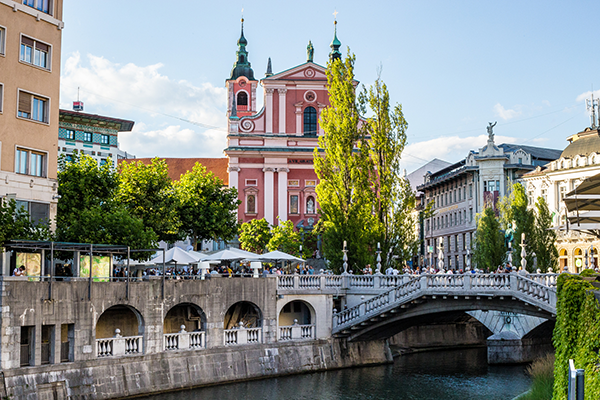
Source: Flickr
Taking the old Franz Bridge as his base, Plečnik added two pedestrian foot bridges to turn the whole thing in to the city’s adored Triple Bridge. This is Ljubljana’s most frequently crossed bridge and it connects the city’s modern main square with the medieval old town and the market on the other side of the bank. The three bridges offer wonderful views of the river Ljubljanica and are a perfect place to stop and soak up the city’s atmosphere. Removing metal railings from the old stone bridge, Plečnik adorned all three bridges with large stone balustrades and lamps, and installed staircases leading down to the river embankment.
The Central Market

Source: Flickr
These lovely market halls are one of the city’s most identifiable landmarks. Following the curve of the river Ljubljanica, they were built between 1940 and 1944. With almost a Venetian feel, the halls overlooking the water have large semi-circular windows, while the street-facing ones have a classical-columned colonnade under which stallholders sell herbs, spices and arts and crafts. The market occupies the entire breadth of the Ljubljanica river embankment from the Dragon Bridge to the Triple Bridge and is the location of a collection of outdoor and indoor markets offering fresh fruit and vegetables, meats, cooked foods, craft, clothes and souvenirs.
Plečnik House
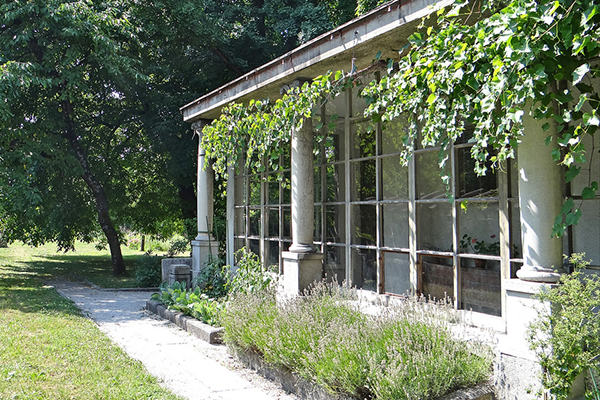
Source: Flickr
Jože Plečnik’s home in Ljubljana, now called Plečnik House, remains as it was when he was still alive but is now a permanent exhibition featuring his drawings, models, plans, photographs and other facets of his work as the country’s greatest architect – along with personal items such as his pencils, spectacles and cigarette packets. You can study sketches that relate to some of his most famous buildings and peruse plans for projects that failed to come to fruition such as the Cathedral of Freedom, intended to house the Slovenian Parliament.
Ljubljanica River Barrier
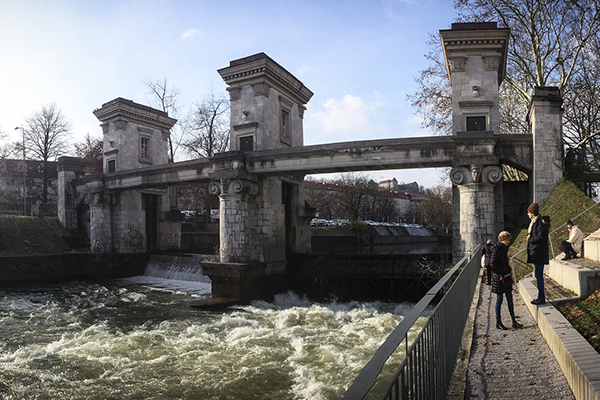
Source: Flickr
Plečnik’s ambitious plans for the Ljubljanica River Barrier included a vast arch which would mark the point where the river left the city but his designs were scaled back when the project was built more than a decade later, between 1939 and 1944. The barrier does not raise or lower as the architect had wished, but it is still visually stunning. There are three towers adorned with columns: look carefully and you’ll see different design influences – the sides of the towers that face the city have Doric columns decorated with dragons’ heads, while the sides that face away have columns that are Ionic in style and decorated with human heads.
Križanke Summer Theatre
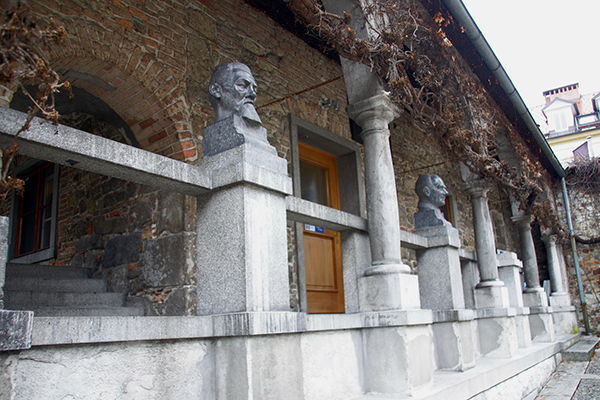
Source: Flickr
This is Ljubljana’s most popular outdoor concert venue. Situated in the centre of the city, it hosts concerts from some of the country’s most prestigious musicians as well as visiting artists. Plečnik was 80 when he was asked to redesign what had been a monastery complex into a series of buildings especially for the Ljubljana Festival. This was his last major project and the open-air Križanke Summer Theatre is majestic – should the rain threaten to spoil the evening, a retractable roof is rolled out to provide shelter. The complex also features the Devil’s Courtyard, originally designed by Plečnik as a place for small chamber performances.
Cobblers’ Bridge
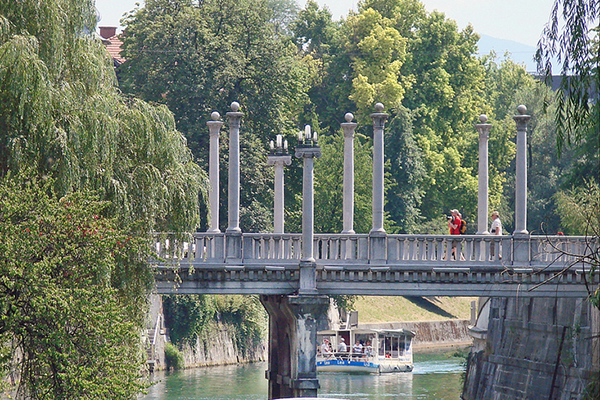
Source: Flickr
Also known as the Shoemaker’s Bridge, this was the location of an old wooden bridge that connected two medieval parts of Ljubljana: the Town Square and the New Square. In a bid to catch passing trade and also to avoid paying taxes, cobblers set up workshops on top of the bridge and this history gave the name to the new bridge built by Plečnik in 1931-32. The Cobblers’ Bridge features balustrades with pillars topped with stone balls. Every Sunday morning there’s a flea market across the span of the bridge and each evening there’s buskers playing live music.
Trnovo Pier Embankment
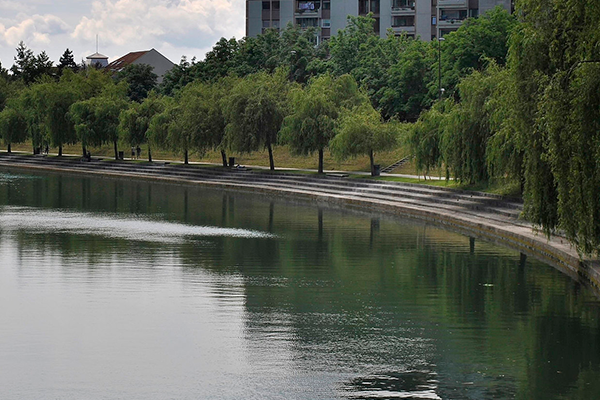
Source: Flickr
This may well be one of the loveliest sculptural river embankments you will ever come across. Sweeping fluidly down to the riverbank, it stretches between between the Prule Bridge and the point where the Gradaščica channel empties into the river Ljubljanica. Together with stone steps and an avenue of weeping willows, Plečnik’s Trnovo Pier Embankment was renovated in 2007 to include seating areas, grass and new walkways which all coming together to make up what locals now nickname ‘Ljubljana beach’. People come to here to socialise, exercise, walk or simply sit and watch the world go by.

